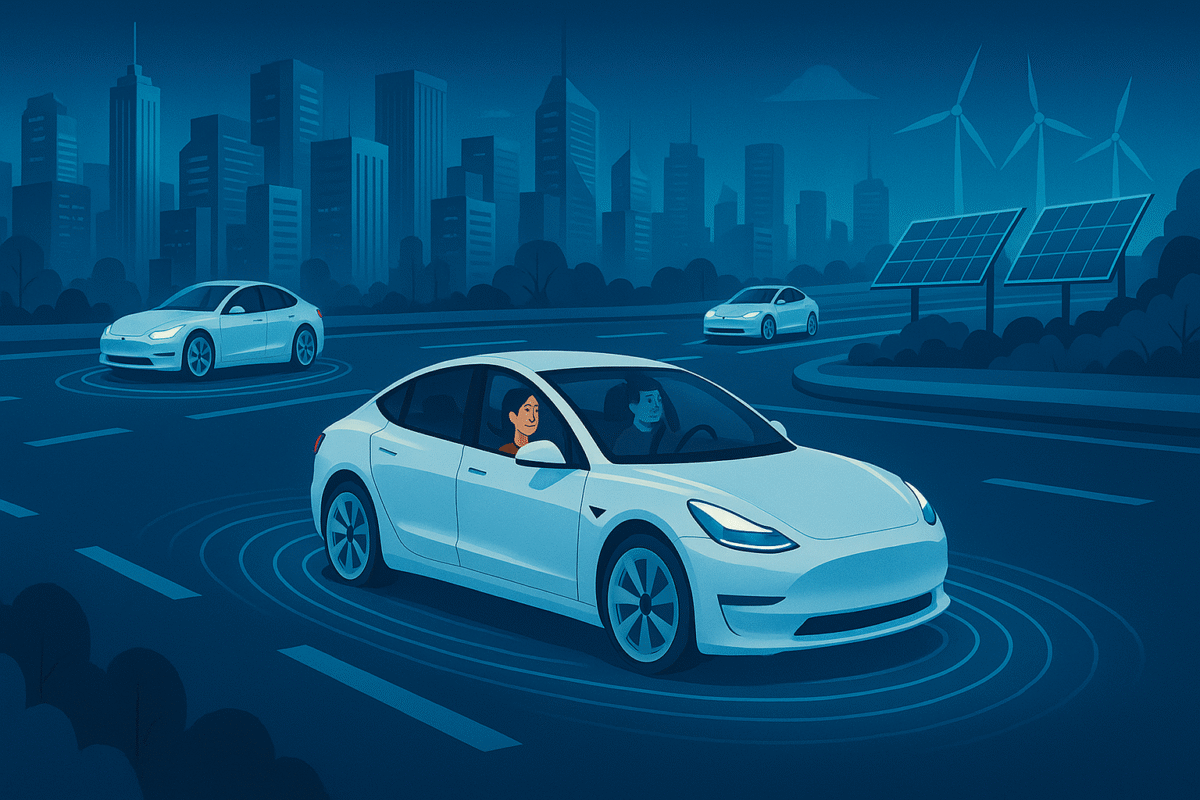Artificial Intelligence is redefining our world at breakneck speed. Every week, we witness breakthroughs and hiccups that underscore how integral AI has become. In today’s roundup, we’re diving deep into three fascinating topics: the recent ChatGPT blackouts, Tesla’s ambitious Robo Taxi program, and the exciting advancements with o3-Pro. Buckle up—it’s going to be an intriguing journey!
ChatGPT Blackouts: What Happened and Why It Matters
AI enthusiasts worldwide recently experienced unexpected interruptions to ChatGPT, one of the most popular AI-driven conversational tools. Imagine relying on an assistant that’s usually at your beck and call, only to find it suddenly unresponsive. Frustrating, isn’t it?
These blackouts occurred due to immense user demand, exceeding server capacities and highlighting critical challenges that companies like OpenAI face—maintaining seamless services amid exponential growth. With millions depending on AI for everything from coding and creative writing to customer support and education, service disruptions are more than mere inconveniences—they expose our heavy reliance on technology.
The situation further illustrates how integrated AI has become in everyday life. Students missed submission deadlines, professionals encountered workflow disruptions, and businesses suffered service delays. The ripple effects of such outages indicate just how deeply interwoven AI tools are within modern infrastructure.
But what’s truly fascinating is the broader implication. The ChatGPT blackouts underscore the need for robust, scalable infrastructure and highlight the vulnerabilities in AI-dependent workflows. As the AI industry matures, reliability and stability must evolve alongside innovation. Developers and providers must adopt forward-thinking strategies, robust load-balancing techniques, and predictive maintenance approaches to handle future demand surges effectively.
Tesla Robo Taxis: Self-Driving Dreams or Reality?

Elon Musk is no stranger to audacious goals, and Tesla’s Robo Taxi program may be one of his boldest yet. Picture this: fleets of driverless Tesla vehicles navigating city streets, efficiently shuttling passengers around town at lower costs and higher safety standards. It’s not science fiction anymore—it’s Tesla’s very real ambition.
Currently, Tesla vehicles have a significant portion of the hardware required to achieve full autonomy. Musk’s vision involves turning existing Teslas into money-making assets for their owners, who could earn passive income simply by sending their cars out to operate as autonomous taxis when not in use. A tempting prospect, isn’t it?
Tesla has been incrementally rolling out autonomous features through software updates, building anticipation and optimism. Autopilot features already help drivers with lane-keeping, adaptive cruise control, and automatic parking, but true autonomous driving demands much more complex functionality. Musk’s aggressive timelines have stirred excitement, criticism, and skepticism in equal measure.
However, the path to fully autonomous Robo Taxis isn’t without roadblocks. Regulatory challenges are substantial, varying significantly from country to country, often slowing the deployment of fully autonomous fleets. Technical hurdles, including dealing with unpredictable urban environments, pedestrians, cyclists, and complex intersections, present ongoing challenges. Public skepticism about autonomous vehicle safety is another barrier, necessitating extensive education and public relations efforts from Tesla.
The implications of Tesla Robo Taxis are monumental—transforming urban mobility, reducing traffic congestion, and substantially cutting carbon footprints. Yet, skepticism persists. Will Tesla deliver on this vision, or is it just another ambitious promise destined for delays? Time—and tech—will tell. Meanwhile, competitors such as Waymo and Cruise are making substantial strides in autonomous vehicle technology, intensifying the race and prompting Tesla to innovate continually.
o3-Pro: A Game-Changer in AI Technology

The newest sensation making waves in the AI community is the o3-Pro. If you’re not yet familiar, the o3-Pro represents a significant leap forward in machine learning capabilities. Its advanced neural architecture dramatically enhances processing power, enabling real-time AI applications previously deemed impossible.
Imagine a tool powerful enough to manage real-time data streams, optimize complex logistical tasks instantly, and predict outcomes with unprecedented accuracy. That’s exactly what o3-Pro promises—and early adopters are raving about its potential.
One key area of application for o3-Pro is predictive analytics, especially in sectors like healthcare and finance. With its enhanced predictive capabilities, o3-Pro can analyze vast datasets swiftly, providing insights that help doctors make quicker diagnoses, financial analysts make better-informed investment decisions, and supply chain managers streamline their operations. It’s not just innovation—it’s practically magic.
The versatility of o3-Pro also extends to industries like cybersecurity and fraud detection, where rapid response and real-time analytics are critical. Enhanced AI-driven detection and response capabilities are vital to combating increasingly sophisticated cyber threats.
Yet, like all AI technologies, the o3-Pro faces scrutiny. Concerns about transparency, data security, and ethical use are front and center. As this technology rolls out more widely, balancing innovation with responsible AI practices will be crucial. AI ethics frameworks and data privacy standards must evolve alongside technological advancements to ensure the safe and responsible deployment of powerful AI tools like o3-Pro.
AI Ethics and Accountability: The Road Ahead

All three stories share a common thread—the rapid advancement of AI is revolutionizing our lives, yet it brings inevitable challenges regarding ethics and accountability. The ChatGPT blackout raised concerns about reliance and robustness; Tesla’s Robo Taxis evoke discussions on autonomy and safety; the o3-Pro spotlights debates on transparency and responsibility.
As users and developers, we must remain vigilant about AI’s impacts and advocate for frameworks ensuring responsible deployment. Transparency about limitations and potential failures isn’t just ethical—it’s essential for fostering trust in transformative technologies. Collaborative industry standards, clear regulatory guidelines, and ongoing public dialogue will be key components in managing these challenges.
Conclusion: Embracing AI with Caution and Curiosity

AI continues to amaze and sometimes alarm us. From ChatGPT’s hiccups and Tesla’s futuristic Robo Taxis to the revolutionary o3-Pro, we’re experiencing rapid technological evolution that’s reshaping society daily. Staying informed about developments, challenges, and ethical implications is crucial.
Whether you’re an AI professional, a casual user, or simply curious about technology, understanding AI’s trajectory will better equip you to adapt to our increasingly tech-driven world. So, let’s embrace the excitement, maintain a healthy skepticism, and keep watching the horizon for the next big breakthrough.
Stay tuned for more insights and updates in our next AI news roundup!
People also search for:
- Did ChatGpt shutdown?
- Why is ChatGPt just a blank screed?
- What is ChatGpt zero?
- What is wrong with ChatGPT app?





